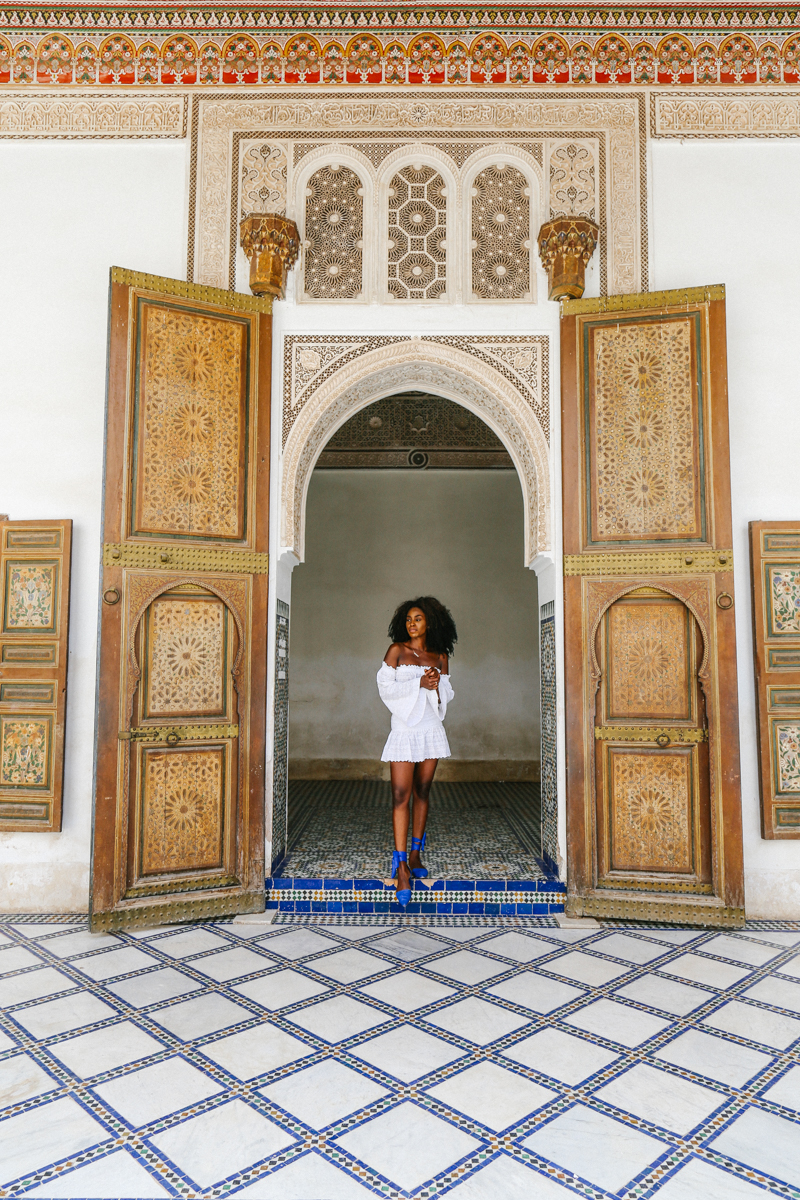After spending quite a bit of time at the Le Jardin Majorelle, we left (reluctantly and only after the crowds started to pour in) for Bahia Palace with the promise of more gardens, more extravagance, and beautiful mosaic tiles. And WOW.
If I'm certain of only one thing after this trip, it's that Moroccans know damn great architecture.
Hidden in the midst of the Mellah (Jewish Quarter), Medina (the old city), and the Kasbah (where the royal employees once lived) was the surprisingly deserted Bahia Palace whose gardens were built in the late 19th century. From what we were told, it was intended to be the greatest palace of that time (its name means brilliance or beautiful - which is painfully accurate) and was built over a 15 year period by two different men in different stages.
First initiated by Si Moussa, who built the initial palace and was vizier to Sultan Sidi Mohammed ben Abd al Rahman and then by the son of Si Moussa Ba Ahmed, vizier of Sulton Moulay Abd al-Aziz.
Because it was built over such a long period of time by two different people, the layout is noted as irregular when compared with other palaces of its type. Despite that, the palace boasts a two acre garden, floor to ceiling tiles, and an intricate level of detail that pays homage to traditional Moroccan architectural styles done artisans and craftsmen brought in from Fes.
Now tranquil and completely empty, it's hard to imagine how hectic and chaotic the palace might have once been when housing Ba Ahmed's four wives and twenty-four of concubines. Ummmmmmm, yeah.
I didn't spend a significant amount of time here (3-4 hours is more than enough), but I would highly recommend a stop here while you explore Marrakech. It was also pretty inexpensive and the gardens make for a great escape from the intense afternoon heat in the summer months.
















